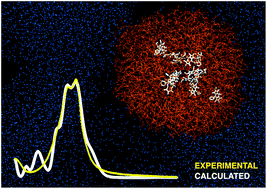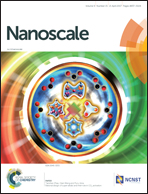Free-energy predictions and absorption spectra calculations for supramolecular nanocarriers and their photoactive cargo†
Abstract
We reconstructed the free-energy landscape for supramolecular nanoparticles of amphiphilic methacrylated-based co-polymers. Their self-assembly in aqueous solution and encapsulation of borondipyrromethene (BODIPY) derivatives were enforced through atomistic free-energy simulations. The BODIPY binding modes detected in each of the free-energy basins were validated through a comparison of theoretical absorption spectra, calculated at the TD-DFT level, to their experimental counterparts. The nanoparticle distribution is controlled within a thermodynamic regime, with free-energy barriers approaching 8 kcal mol−1, enabling the existence of different-sized nanoparticles in aqueous solution at room temperature. Two types of supramolecular morphologies were identified. One is compact and spherical in shape and the other is large and donut-like, with the former more stable than the latter by 4 kcal mol−1. The morphology of the supramolecular host affects the binding mode of the BODIPY guests. Stacked BODIPY aggregates are encapsulated in the spherical nanocarriers, whereas isolated chromophores associate with the donut-shaped assemblies.



 Please wait while we load your content...
Please wait while we load your content...